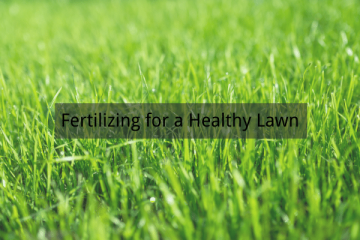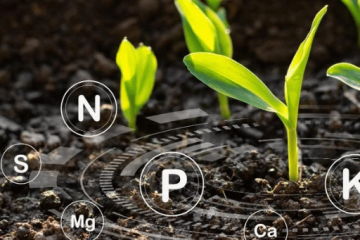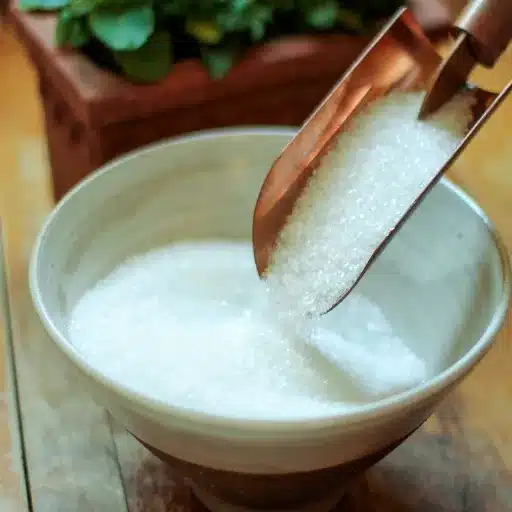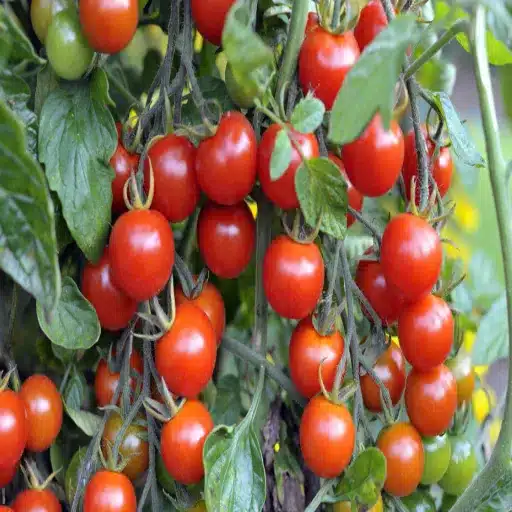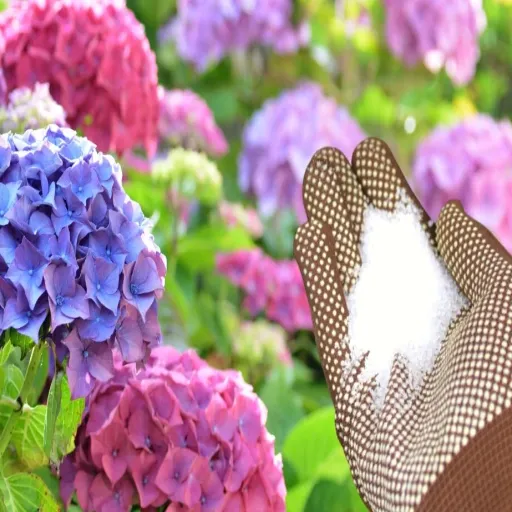Gardening enthusiasts are constantly seeking new ways to enhance plant growth, improve soil quality, and boost overall garden health. One often-overlooked yet highly effective tool in this endeavor is Epsom salt. Known chemically as magnesium sulfate, Epsom salt has long been utilized in agricultural and horticultural practices due to its ability to address key nutritional deficiencies in plants. This article will explore the scientific benefits of Epsom salt in the garden, detailing how it can provide essential nutrients like magnesium and sulfur, promote healthy development, and even improve crop yields. Whether you’re a seasoned gardener or a beginner, unlocking the potential of Epsom salt can become a valuable part of your gardening routine.
What Is Epsom Salt and Why Use It in Gardening?
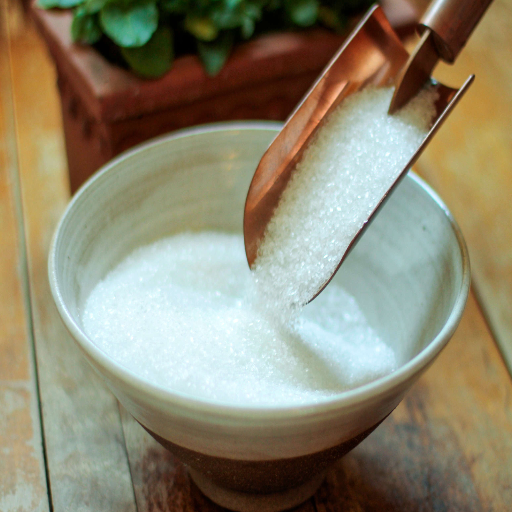
How Does Magnesium Sulfate Benefit Plants?
Being the primary component of Epsom salt, magnesium sulfate serves a key role in plant growth due to magnesium (Mg) and sulfur (S) being two essential macronutrients. Photosynthesis, the process wherein plants make use of sunlight to create energy, requires them to constantly produce chlorophyll. Magnesium is the central component to this process. If magnesium is deficient, then plants will suffer greatly due to their inability to produce sufficient chlorophyll. This ultimately leads to unhealthy plants that exhibit stunted growth with yellowing leaves, called chlorosis. Sulfur further enhances plant health by assisting proteins and enzymes, which guarantees the overall vitality of plants.
- The amount of magnesium in it: Epsom salt is known to have roughly 9.8% magnesium by weight, meaning the plants are able to absorb it easily. This is especially true for crops that have a heightened demand for magnesium such as tomatoes, peppers, and even roses.
- The amount of sulfur in it: Epsom salt enhances nutrient uptake and bolsters plant resilience and comprises around 12.9 percent sulfur, which helps in dealing with environmental stressors.
- Dissolvability: While Epsom salt can be a soil amendment, its main strength lies in being delivered efficiently as a foliar spray. Epsom salt dissolves fully in water, ensuring it can be delivered efficiently as a foliar spray (diluted at 1–2 tablespoons per gallon of water).
The careful use of magnesium sulfate can potentially enhance the rate of photosynthesis, flowers’ and fruits’ production, as well as the overall health of the plant, which provides further reasons to confidently consider it as a useful gardening product.
Is Epsom Salt a Fertilizer or a Nutrient Supplement?
Due to the lack of essential macronutrients, nitrogen, phosphorus, and potassium present in complete fertilizers, Epsom salt should only be considered a nutrient supplement. Furthermore, magnesium sulfate fails to provide a complete nutrient profile because instead of offering comprehensive coverage, it simply addresses specific nutrient insufficiencies.
- Chlorophyll and Photosynthesis Production: Epsom salt’s weight magnesium content of 9.8% supports the production of chlorophyll as well as photosynthesis.
- Sulfur’s Role in Protein Synthesis: Approximately 12.9% of the epsom salt’s weight is sulfur, which supports the synthesis of proteins for the plant as well as plant enzymes.
- Fertilizer Absorption: Magnesium sulfate’s water-solubility allows for foliar and soil application which, if done, results in rapid nutrient uptake.
- Target Demographic: Epsom salt is particularly useful in magnesium deficeint crops such as roses, peppers, and tomatoes. Symptoms like poor fruiting and leaf yellowing get corrected with the use of Epsom Salt.
In conclusion, magnesium sulfate can be used to Epsom salt can be used to effectively eliminate specific deficiencies, but, in order to achieve best results, it is vital that a blend of balanced fertilizer is also utilized.
How to Use Epsom Salt in the Garden Effectively?
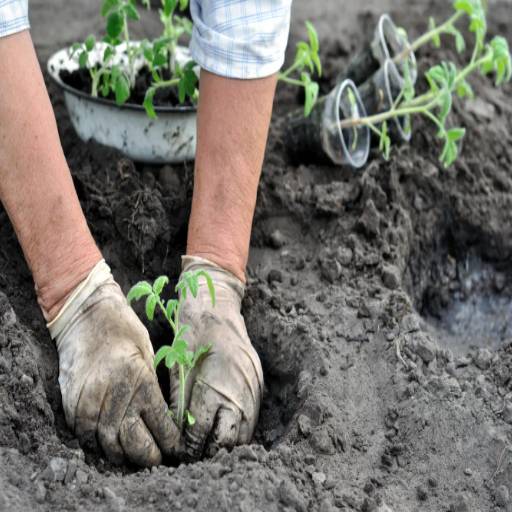
Best Practices for Adding Epsom Salt to Soil
- Do a Soil Test: Conduct a soil test before application to determine magnesium and sulfur concentration. This guarantees that Epsom salt is needed and helps to prevent excess application, which might disturb the soil nutrient equilibrium. The average magnesium percentages of most crops should not be lower than 0.20% or higher than 0.50% of the total composition of the soil.
- Estimate the Correct Dosage: Apply Epsom salt at the recommended ratios on the crop and type of deficiency. In the case of non-specific crops, use 1 tablespoon (15 grams) for a gallon of spray or 1-2 tablespoons (15-30 grams) for surface application per square foot of soil.
- Use During Growing Season: During the season of active growth, try to use Epsom salt in those periods where the uptake of nutrients is maximized. For example, during flowering and fruiting, it helps crops like peppers, tomatoes, and roses greatly.
- Avoid Overuse: Continued application of Epsom salt without limits results in an unbalanced ratio of important elements in soil, imbalanced nutritional ratio, or even soil poisoning. Follow the mentioned guidelines and reapply only when magnesium-deficit signs, like yellowing in leaves or stunted fruit formation, remain.
By using the best recommended practices, in contrast to the scientifically unsupported ones, Epsom salt can prove to be a very effective measure for increasing plant prosperity and fixing some nutritional deficiencies.
How to Dilute Epsom Salt for Plant Use
Formulating an Epsom salt solution that will be applied to plants requires precision, as incorrect ratios may lead to oversaturation of the soil and plants. For general application, it is advisable to mix 1 to 2 tablespoons (15 to 30 grams) of Epsom salt to a gallon (3.78 liters) of water. This dosage ensures that it can be used for foliar application and as a root drench. It is advised that the salt is fully soluble before being applied so that uneven applications can be avoided.
- Houseplants: For confined space soils, use 1 teaspoon (5 grams) per 1 liter of water, and do not apply more than once per month.
- Vegetables: For the growing season, apply every 4-6 weeks using the 1 tablespoon per gallon ratio.
- Lawns: For lawns, best results are achieved by spraying an evenly distributed solution of 1 cup (240 grams) of Epsom salt diluted with 5 gallons (18.9 liters) of water.
- Roses: During periods of active growth, for roses, use 1 tablespoon/ gallon diluted with water and apply to the base every 2 weeks.
To increase accuracy, magnesium and sulfur application should be tailored to the specific plant species while monitoring for excess seeing in signs like tip burn, crusty residue, and degraded foliage. No large-scale applications should be made before soil tests are done.
Amount of Epsom Salt Per Gallon of Water
To achieve the best results when treating plants with Epsom salt, the dosage must be tailored to the specific plant and situation.
- For foliar applications: 1-2 tablespoons per gallon of water is the recommended ratio. This helps deliver enough magnesium and sulfur while not burning leaves or over-nutrifying.
- For soil drenching, 2 tablespoons per gallon of water works if the solution is sprinkled evenly over the soil’s top layer. This facilitates root absorption over longer periods, which is ideal.
- For seedlings or very young plants: 1/2 tablespoon per gallon of water does not overexpose young fragile roots to shock from excess magnesium or sulfates.
Careful follow-up check of how plants react after use is crucial, along with concentration adjustments from soil or tissue tests to curb overuse issues. To mitigate foliar burn, avoid application when there is direct sunlight, while also ensuring all options used are fresh.
Can Epsom Salt Solve Blossom End Rot in Tomatoes?
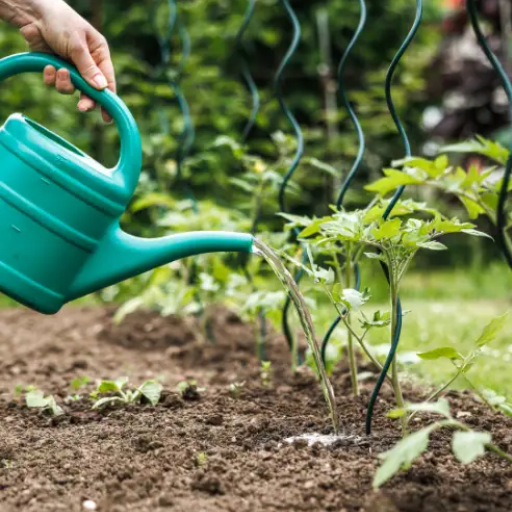
Identifying Blossom End Rot in Tomatoes
Blossom end rot in tomatoes is a calcium deficiency-induced disorder that occurs due to insufficient calcium needed for the proper development of the cell wall in the growing fruits. This disruption leads to the formation of dark, depressed areas, or lesions on the blossom end, which often increase in size with time. After recognizing these clues, I suggest the need to mitigate factors interfering with calcium absorption, which may include inconsistent watering, saline-heavy soils, or nutrient disproportion, like too much potassium or magnesium.
- Maintaining Consistent Soil Moisture: Reduce evaporation by applying a mulch layer; at the same time, irrigate in a way that nourishes the soil deeply.
- Calcium Availability: Check the soil to make sure calcium is present within range. If the amount is inadequate, apply calcium nitrate (15.5-0-0) as a foliar application weekly at 1 teaspoon per gallon of water.
- Fertilizer Avoidance: Seek to achieve balance with nitrogen applications while avoiding excessive application of ammoniacal nitrogen, which negatively impacts calcium absorption.
- Soil acidity level: Control soil acidity so it is not lower than the minimum and not higher than the maximum level, optimal for tomatoes, which is 6.0 to 6.8.
These technical measures, when correctly identified and undertaken, facilitate the minimization of blossom end rot syndrome and the maximization of tomato productivity.
How Epsom Salt Can Help Alleviate Blossom End Rot
Magnesium sulfate, also known as Epsom salt, might help with blossom end rot by supplying magnesium, which is needed for many functions in a tomato plant. Hypothetically, Epsom salt could aggravate blossom end rot due to calcium uptake interference. Magnesium is not the problem; it’s the calcium. The application of Epsom salt must be reasoned and done with care to ensure aggravation of calcium deficiencies does not occur, keeping in mind that too much magnesium restricts calcium absorption.
- Rate of Application: Use no more than 1-2 tablespoons of Epson salt per gallon of water, and foliar spray or soil drench the solution onto the plant to deliver magnesium directly.
- Timing: Limit application to once every 2-4 weeks to avoid overloading the plant with nutrients.
- Calibration with Soil Tests: Before applying Epsom salt, conduct a soil test to check magnesium and calcium concentrations. To ensure proper nutrient balance, magnesium should be within 25-50 ppm in soil.
- pH Consideration: To maximize calcium and magnesium uptake, soil pH must be controlled between 6.0-6.8 and set to prevent nutrient lockout.
Epsom salt contains magnesium that may be beneficial as a dietary adjunct; however, it is not effective in directly reducing blossom end rot. Rather, it should be used in conjunction with proper calcium supplementation, consistent soil moisture maintenance, and nutrient interaction management.
Improving Soil with Epsom Salt: Is It Possible?
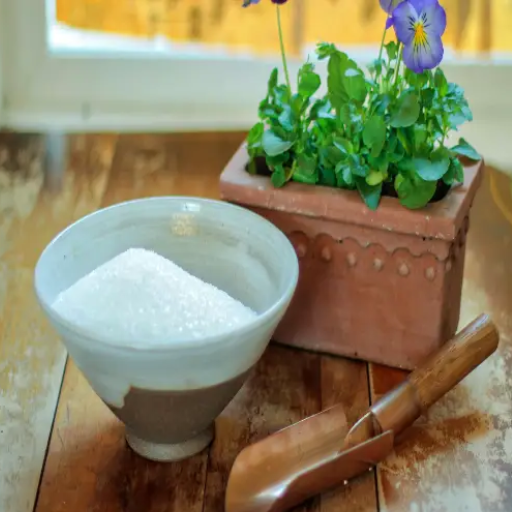
Impact of Epsom Salt on Soil pH Levels
Epsom salt, known in chemistry circles as magnesium sulfate (MgSO₄·7H₂O) or epsomite, is a magnesium sulfate which neither neutral nor acidic. As a result, it doesn’t appreciably change the pH of the soil. The addition of Epsom salt does not make the soil more acidic or alkaline. Its primary role of Epsom salt in soil improvement is specifically to increase the magnesium and sulfur contents, which are important for a plant’s growth as micronutrients.
- Soil pH Assessment: Epsom salt should ideally be applied in soil pH range of 6.0-7.5 for optimal plant growth, but it dilutes the existing pH levels of soil.
- Magnesium Content: Approximately 9.8% by weight of Epsom salt is magnesium, thus making it suitable for plants suffering from a deficiency of this nutrient.
- Sulfur Content: Epsom salt increases the amount of sulfur in the soil by about 12.9%, making it a vital source for chlorophyll and protein production in plants.
Although useful for the treatment of magnesium and sulfur deficiency, Epsom salt must be applied with full knowledge of the soil micronutrient content level, as overuse can lead to an imbalance of nutrients while maintaining core soil pH properties.
Enhancing Nutrient Uptake with Epsom Salt
To improve nutrient uptake with Epsom salt, my technique is to tailor its application to the specific requirements of the plants and soil.
- Application Rate: As a general rule, I use 1-2 tablespoons of Epsom salt per gallon of water for foliar spray and soil drenching. At this concentration, magnesium and sulfur deficiencies can be met while preventing the medium from being oversaturated.
- Frequency of Application: Foliar applications are performed bi-weekly for the duration of the active growing season. At this frequency, an adequate amount of nutrients is supplied, and the plant can utilize the nutrients efficiently through the leaves.
- Testing Soil Conditions: Prior to using Epsom salt, a soil test to check the magnesium and sulfur levels have to be done. This mitigates the possibility for over-application which can result in nutrient antagonism or imbalance.
- Conditions for Use: Epsom salt use is best applied to soils that lack magnesium and sulfur such as sandy and acidic soils where these components tend to leach out.
By considering and aligning these technical requirements with the plant’s growth considerations, I ensure that Epsom salt works optimally for improving and maintaining the health and nutrient uptake of the plants.
Using Epsom Salt for Plants: Which Plants Benefit the Most?
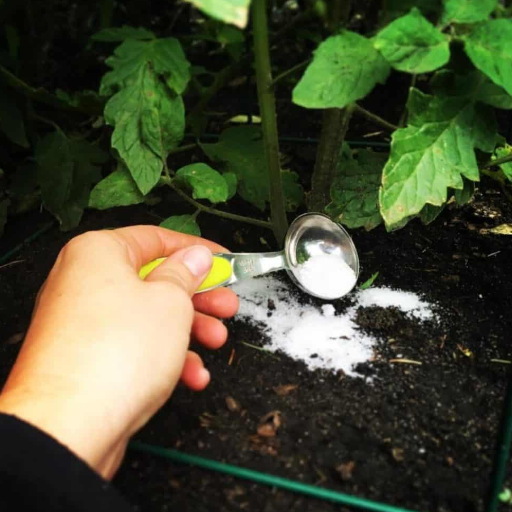
Best Practices for Using Epsom Salt on Peppers and Tomatoes
To achieve optimal results when utilizing Epsom salt on peppers and tomatoes, I follow certain best approaches that correspond with their growth need and nutrient requirements. Oftentimes, these plants require additional magnesium, particularly in magnesium-deficient soils.
- During Seedling Stage: I take 1 tablespoon of Epsom’s salt and dissolve it in one gallon of water. I apply the solution by foliar spray every two weeks. This addresses magnesium uptake efficiently while supporting root and leaf development during the early days.
- During the Fruiting Stage: The Plant’s magnesium needs flood during this period because the focus of production has shifted to fruits. I apply Epsom salt into the soil at the rate of 1 tablespoon per square foot around the plant’s base and water it well so that it percolates.
These applications rely on the standard concentration of magnesium sulfate in Epsom salt, which is roughly 10% magnesium and 13% sulfur. They are modified based on deficiencies or excessive leaching noted on sandy soils. I assess soil and plant health so that the supplementation assists in enhancing chlorophyll production and overall growth without overusing the soil ecosystem.
Can Epsom Salt Help Houseplants Thrive?
Yes, Epsom salt can be beneficial to houseplants if used properly. It’s main ingredients, magnesium (10%) and sulfur (13%), are necessary nutrients which help in the production of chlorophyll, enzyme activation, and assisting the growth of the plant. Magnesium is beneficial in the process of photosynthesis while sulfur helps in protein development and root growth.
- Dilution Rate: For general application, dissolve 1 tablespoon of Epsom salt in a gallon of water. This solution can be used once a month during the growing season to prevent nutrient imbalances.
- Frequency: Excessive application can result in magnesium buildup in the soil, causing an imbalance with other nutrients such as calcium or potassium. Observe plant responses and proceed accordingly.
- Plant Specific Needs: Certain houseplants such as palms or ferns might benefit more from having their magnesium levels increased, while others may require less supplementation depending on their natural environment.
Adequate control of the concentration of nutrients within soil and plant health is necessary to avoid toxicity and ensure Epsom salt is beneficial to houseplants.
How to Use Epsom Salt with Garden Shrubs and Flowers
When applying Epsom salt to garden shrubs and flowers, one needs to pay attention to the soil conditions and the nutrient needs of each plant type. Begin with a soil test to check the magnesium and sulfur levels. If supplementation is recommended, apply Epsom salt as indicated below:
- For Established Shrubs: Mix 1–2 tablespoons of Epsom salt into 1 gallon of water. During the growing season, apply this solution around the shrub’s base every four to six weeks to help maintain healthy leaves and blooms.
- For Flower Beds: Add 1 tablespoon of Epsom salt for every square foot and lightly rake it into the topsoil. Water the area thoroughly after adding the Epsom salt. For best results, repeat this once every month.
- For Potted Flowers: Mix 1 teaspoon of Epsom salt into 1 quart of water. This solution can be used to water the plants every three to four weeks. With this method, there is no risk of over-fertilization.
Bear in mind to continually monitor plant health and adjust the application rates to mitigate erosion which leads to lack of balance and nutrients for the soil.
Reference sources
Frequently Asked Questions (FAQs)
Q: What are the benefits of using Epsom salt in the garden for plants?
A: Epsom salt can provide several benefits to garden plants, such as improving nutrient absorption, enhancing growth and flowering, and correcting magnesium deficiencies, which are essential for healthy plant development.
Q: How do I apply Epsom salt to my garden plants?
A: You can add one to two tablespoons of Epsom salt around the base of the plant. This helps in directly supplying magnesium to the roots, which can lead to healthier and greener foliage.
Q: Can Epsom salt make peppers and tomatoes more productive?
A: Yes, adding Epsom salt can help make peppers and tomatoes more productive by providing essential nutrients that these plants need for better fruiting and overall health.
Q: How often should I use Epsom salt on my plants?
A: It is generally recommended to add one tablespoon of Epsom salt per gallon of water and apply it once a month. However, it’s important to test your soil to ensure you’re not adding salts to soil that already has sufficient magnesium levels.
Q: Are there any risks of using too much Epsom salt in the garden?
A: Yes, using too much Epsom salt can do more harm than good by potentially leading to nutrient imbalances. It’s crucial to follow recommended application rates and test your soil regularly.
Q: Can I use Epsom salt for all types of plants?
A: While Epsom salt can benefit many garden plants, it’s particularly useful for plants prone to magnesium deficiency, such as tomatoes, peppers, and rose bushes. Always consider the specific needs of each plant species before adding it to plants.
Q: How does Epsom salt benefit flower gardens?
A: Epsom salt can enhance the color and growth of flowers by providing magnesium, which is vital for chlorophyll production. This can lead to more vibrant blooms in your flower gardens.
Q: Is Epsom salt effective for correcting calcium deficiencies in plants?
A: No. Epsom salt is primarily used for addressing magnesium deficiencies. Calcium deficiency is a different issue that is not corrected by Epsom salt but rather by using calcium-rich amendments.
Q: Can Epsom salt be added to compost?
A: Yes, Epsom salt can be added to compost in small amounts to enrich the compost with magnesium, which can later benefit the garden soil when the compost is applied.
Q: What is the origin of Epsom salt?
A: Epsom salt is named after the town of Epsom in England, where it was originally discovered. It is a naturally occurring mineral compound of magnesium and sulfate.

